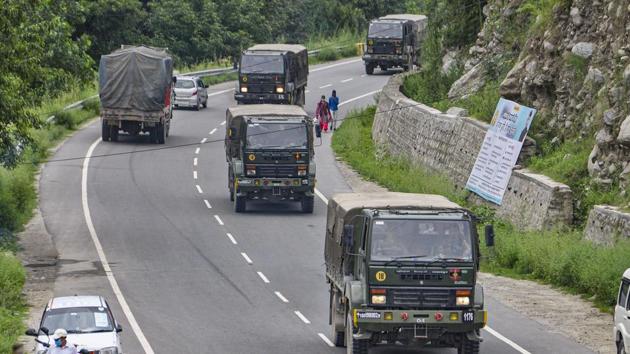Altitude begins to take a toll in Ladakh
Some Chinese troops have been evacuated from the Finger 4 heights to a field medical facility ahead of Finger 6 during the last two to three days due to health complications linked to high altitude, the officials said, with the development turning the spotlight on the challenges of high-altitude warfare.
The Indian Army has observed Chinese medical teams evacuate a few soldiers of the People’s Liberation Army (PLA) on stretchers from heights in the Finger Area on the northern bank of Pangong Tso to a nearby field hospital, officials familiar with the developments said on Friday, speaking on the condition of anonymity.

Some Chinese troops have been evacuated from the Finger 4 heights to a field medical facility ahead of Finger 6 during the last two to three days due to health complications linked to high altitude, the officials said, with the development turning the spotlight on the challenges of high-altitude warfare.
The Finger Area, a set of eight cliffs jutting out of the Sirijap range overlooking the Pangong lake, is among the friction points in the eastern Ladakh theatre, where both armies have deployed almost 100,000 soldiers and weaponry in their forward and depth areas. Indian soldiers are barely a few hundred metres from Chinese troops who are holding positions on the Finger 4 ridgeline.
As a harsh winter draws closer in eastern Ladakh, where Indian and Chinese soldiers are holding towering heights and already exposed to sub-zero temperatures, both armies will face the challenge of ensuring that casualties related to high-altitude illnesses are kept at their lowest, the officials said.
“Extreme weather at those heights of 16,000 to 17,000 feet is bound to create health complications for soldiers --- both Indian and Chinese. And the harsh winter is yet to set in. The conditions will only get worse in the coming weeks and months,” said one of the officials cited above.
Also read: No power can stop Indian forces from patrolling Ladakh areas, asserts Rajnath Singh
Indian soldiers occupying positions in the eastern Ladakh sector have undergone the necessary acclimatisation to be deployed at high altitudes and adequate forward medical facilities are available to cater for any emergency, said a second official.
“Indian soldiers have held positions at even higher heights on the Siachen glacier. But high-altitude warfare comes with its own unique challenges,” the official said.
Prepared for the long haul in the Ladakh theatre, India has made arrangements to provide logistics support, including medical facilities, to its soldiers deployed in forward areas -- more than 50,000 Indian troops are likely to remain stationed in the theatre through the winter months to deal any provocation by the Chinese forces.
“It will be best for soldiers to lie low at those heights and avoid any unnecessary manoeuvres or activities that could trigger severe health complications. Troops from both sides will face the same set of challenges as far as weather goes,” said Lt General BK Chopra (retd), a former director general of armed forces medical services.
Chopra said high-altitude cerebral oedema (Haco) and high-altitude pulmonary oedema (Hapo) are among the serious illnesses that soldiers can develop at those heights.
Around 1,000 soldiers have died guarding Siachen since the army took control of the inhospitable glacier in April 1984, almost twice the number of lives lost in the Kargil war. Almost a fifth of the casualties were linked to enemy fire before the November 2003 ceasefire between India and Pakistan kicked in. The remaining deaths were because of nature’s fury, accidents and medical reasons.
Advancements made in high-altitude medicine, better gear, best possible training, in-house innovations, and following proper drills have helped the Indian Army keep the casualty rates low in high-altitude areas, experts previously told HT.
Get Current Updates on India News, Lok Sabha election 2024 live, Election 2024 along with Latest News and Top Headlines from India and around the world.



